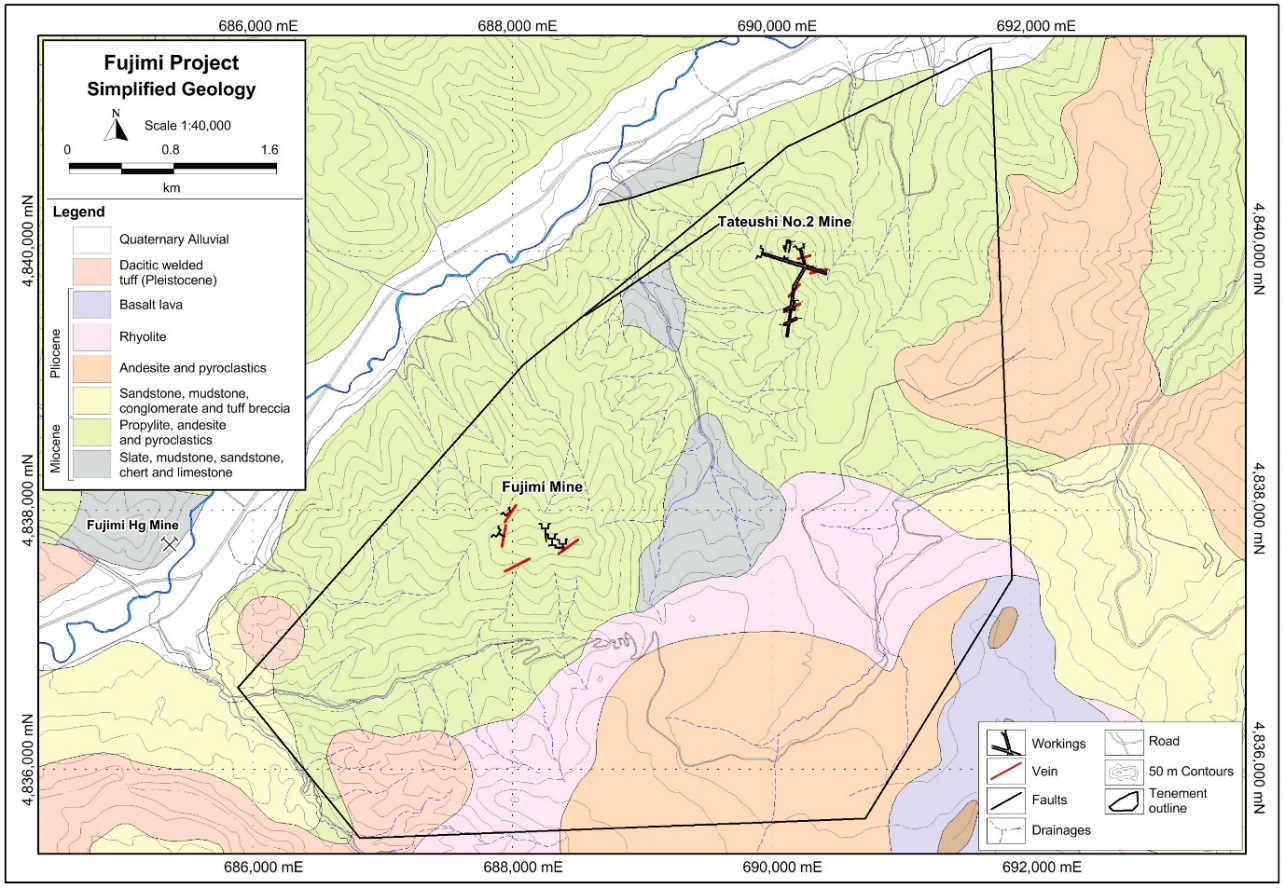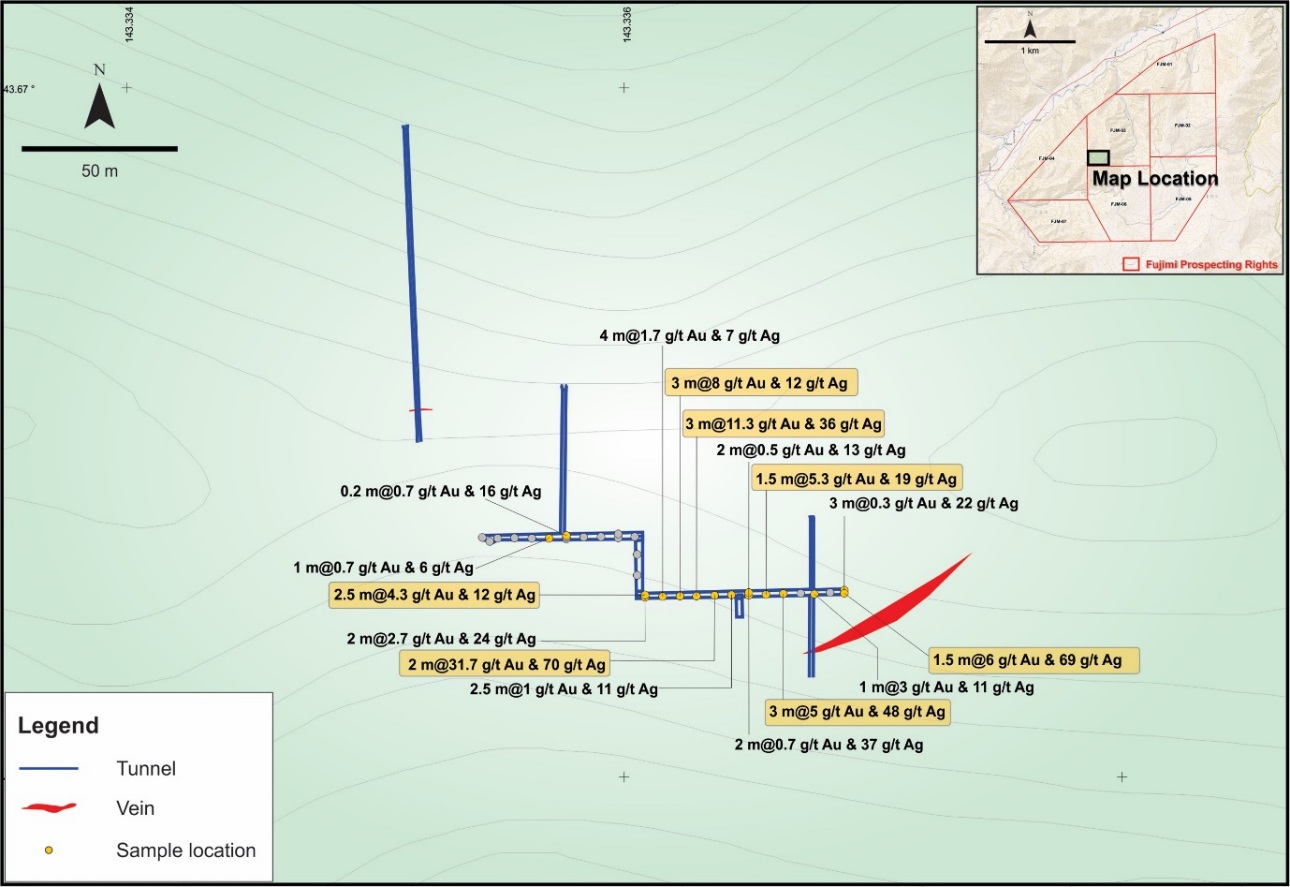Geology and Mineralisation
The gold mineralization styles at the Fujimi and Onne Projects are classified as rift-related, low-sulfidation epithermal. Mineralization is typically associated with quartz-chalcedony-adularia-sericite±calcite in silicified and veined- or brecciated-structures, including dark sulfidic material, termed ginguro bands. The veins are characterized by massive to banded quartz-chalcedony and vein breccia. Lattice-blade, ‘bosa’ textures are also described. The veins are associated with zones of silicification and a spatial relationship between gold-silver veins, mercury occurrences and possible intrusions (e.g., rhyolite stocks and domes) is suspected, based on MMAJ report descriptions.
Mineralization within the Fujimi Project is hosted in multiple sub-parallel quartz veins that trend N25° - 80° E and dip moderately to steeply towards the northwest. These veins occur in two locations, each about 150 m by 100 m, known as the Fujimi mine and No. 2 Tateushi mine. MMAJ, 19901 compiled historical geochemical maps of old workings in the Fujimi mine indicate vein thicknesses that range from 0.2 to 4.0 m, with gold values up to 32 g/t Au and 70 g/t Ag. An 11 m long zone in one of the workings returned an average of 6.3 g/t Au and 25 g/t Ag across an average vein width of 2.9 m at approximately 1,090 m RL (note raw analytical data upon which published gold-silver values and associated maps are based are not published).
The quartz veins in both mine areas are hosted in Lower to Middle Miocene tuff, propylite and rhyolite volcanic rocks. Pliocene andesite and basalt unconformably overlie these Miocene lithologies. The Mesozoic Hidaka Formation, consisting of sandstone, slate and hornfels, form the basement.
 Simplified geology, historical workings and veins in the Fujimi application license area.
Simplified geology, historical workings and veins in the Fujimi application license area. Significant assay results1 from underground development in the Fujimi mine (plan view).
Significant assay results1 from underground development in the Fujimi mine (plan view).
Mineralization in the Onne Project area is hosted in Lower Miocene rhyolitic rocks consisting of tuff, tuffaceous siltstone, flow-banded rhyolite and plagioclase-hornblende-phyric rhyolite flows. The rhyolites are covered by andesitic rocks locally. Six quartz veins, trending N60° W to E-W and dipping 55° to 80° S, are reported over an east-elongate area that is 200 m by 150 m. The known veins range up to 0.8 m wide (widths range from 0.07 - 0.8m) with historical mine grades of 5-15 g/t Au and 40 g/t Ag. The Onne veins consist of white, transparent, massive, banded, and locally lattice-bladed ‘bosa’ quartz and are associated with zones of silicification.

